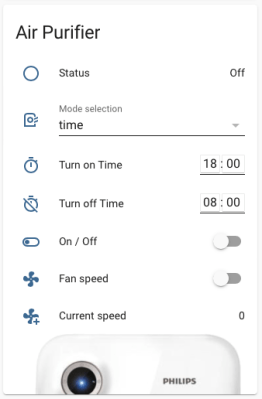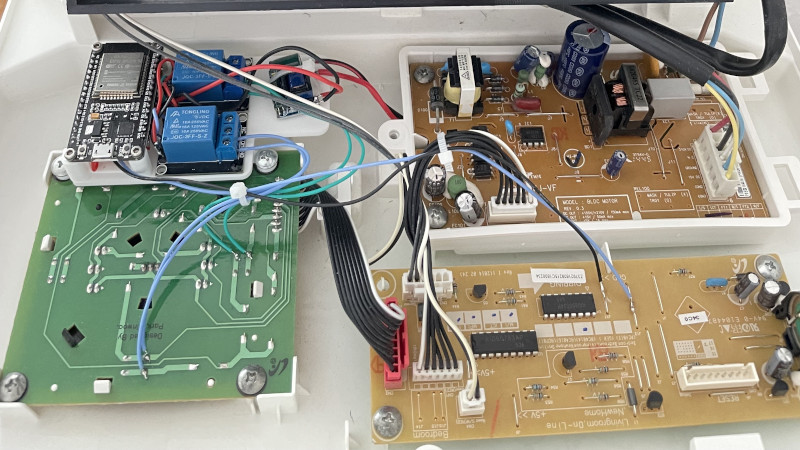A lot of hackers are rightfully concerned about the privacy issues that surround many of today’s “smart” gadgets, but it’s hard to argue that the ability to remotely control devices around your home isn’t convenient. Enter self-hosted, open source projects like Home Assistant. This provides the framework for building out a home automation system without having your soul information sold, but as you might expect, you’re going to have to put some effort in to get the most of it.
For example, take a look at this Phillips AC4014 air purifier that [Anton] connected to Home Assistant by way of an ESP32. Rather than getting too bogged down in reverse engineering the purifier’s surprisingly complex internal electronics, he took the easy way out and wired a couple of relays across the power and fan speed buttons; this allows the device to be easily controlled by the microcontroller, without impacting the functionality of the original controls.
 But since those front panel controls still work, that meant [Anton] needed a way for the ESP32 to detect the device’s status and report that to Home Assistant so everything stayed in sync. So he looked around on the PCB for a trace that got powered up when the air purifier was up and running, which he connected to a pin of the microcontroller through a transistor. This let’s the firmware determine if the machine is running or not just by checking if the appropriate pin has gone high.
But since those front panel controls still work, that meant [Anton] needed a way for the ESP32 to detect the device’s status and report that to Home Assistant so everything stayed in sync. So he looked around on the PCB for a trace that got powered up when the air purifier was up and running, which he connected to a pin of the microcontroller through a transistor. This let’s the firmware determine if the machine is running or not just by checking if the appropriate pin has gone high.
Speaking of the firmware, [Anton] decided to use ESPHome rather than trying to write his own code from scratch. This project allows you to rapidly add new devices to Home Assistant by providing the firmware with a relatively simple YAML configuration file, which he’s provided as an example. In fact, he’s provided quite a lot of examples with this project, down to an annotated image of the PCB that shows where to tap your wires into. He’s done quite a service for anyone who’s got this same model of air purifier.
This unit doesn’t appear to have any capability of actually checking the quality of the air in the room, but we’ve recently seen a low-cost IKEA product that can do exactly that. Even better, it can be easily modified to report its findings over the network using the ESP8266.















I have a bunch of these devices around the house: air purifier, dehumidifier, etc.. none of which can be controlled remotely. Unfortunately their prohibitively high cost makes me worry about opening them in order to add more functionality. Breaking it beyond repair would not go down well in the family (wife), so I have a better solution it’s called “hey kid, go turn off/off that device”.
Best kind pf voice-activated service!
we have an open plan living/kitchen. the food smells linger for a long time, even with a window open. Does anyone have an air purifier and is it effective for cooking smells above open windows?
Any purifier should work as long as it has a active carbon layer and it has the capacity for the square footage.
Yes, those apparatus are “magic”. When we do a “raclette” (which involves melting some smelly cheese) the whole living room smells. Using an air purifier (ionizer / negative ion generator + HEPA filter) the living room does not smell anything after one hour.
It also works great for reducing pollen amounts (I reacts badly to cypress pollen) in the house, or reduce cigarette smell …
I also use it to reduce smell and fumes when I laser engrave stinky materials such as leather.
I own two of them from different brands (by the way it seems very easy to build one by your own).
Winix 5500. The 5200 is a bit cheaper, but the 5500 comes with a much heaver carbon filter.
Thanks
Yes , the air and surface pro with Activepure™. You want the model that has the activated oxygen option there is nothing better